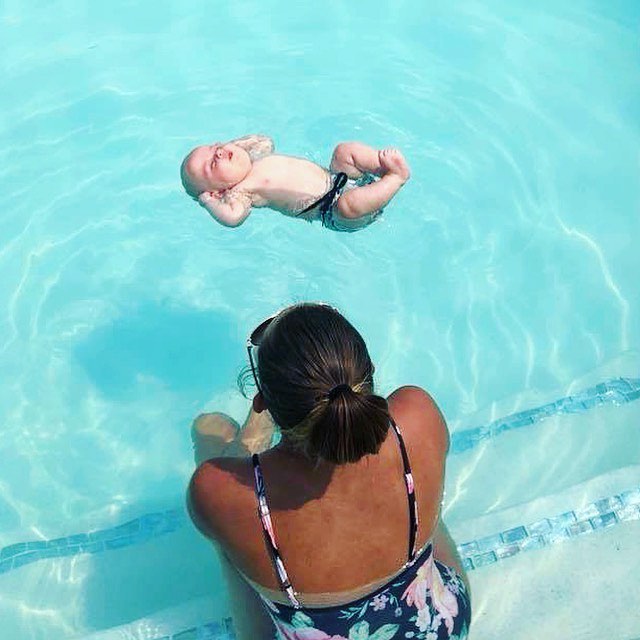
Kristy Neilson and her family traveled to Lake Powell three years ago with her then 2-year-old son, Carter. While loading up the houseboat on the dock, before the family dug the life jackets out of storage, the unthinkable happened: Carter fell off the back of the boat. According to Neilson, Carter could have been in serious trouble if it weren’t for the swimming lessons he took a few weeks prior.
“When I found him on his back it was that kind of numb feeling,” Neilson said. “It all happened so quickly. It could have been tragic, but he was able to go straight to his back float.”
Neilson said she was grateful Carter remembered to roll into his survival float position and that the people and babysitters around him noticed something was wrong.
“It was just a good reminder to be more aware because accidents happen,” Neilson said. “It doesn’t take very long — even a second.”

Drowning accidents like Carter’s are not uncommon. According to the Violence and Injury Prevention Program‘s website, drowning is the third leading cause of injury-related death for Utah children ages 1 to 14.
For every American child who drowns, four others are hospitalized for near-drowning, according to the Utah Safety Council.
Safe Kids Utah Director Cambree Applegate said the organization has pushed for more water-safety awareness to combat the drowning problem.
“We’ve really tried to push getting kids the education they need to be successful swimmers in order to prevent a drowning,” Applegate said. “We encourage kids do lessons fairly young — even as young as toddler age.”
Applegate noted the campaign’s success as people are gravitating toward the idea of water safety education.
“I do feel like there is a lot more awareness to get your kids swimming lessons fairly young and I feel like it’s becoming more part of our culture,” Applegate said. “It’s not unusual to see young kids taking swimming lessons and learning some very rudimentary skills around the water.”
Different Utah organizations and companies provide the education and swim lessons Applegate mentioned.
The Swimmin’ Hole
Sheila Morrison, founder of The Swimmin’ Hole in Pleasant Grove, provides swim lessons to swimmers of all ages and skills in an 88-degree indoor pool.
Morrison is originally from Ontario, Canada, and has been teaching swimming lessons for more than 45 years. After teaching at the American Fork Fitness Center, Morrison and her husband built an have been teaching kids of all ages and abilities since 2005, when they built an indoor pool in 2005.
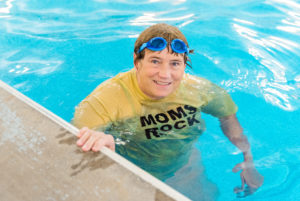
Morrison has a staff of at least six instructors during the year. The staff teaches a variety of lessons ranging from parents and tot classes to an in-house swim team.
According to Morrison, her program offers “parents and tots” group classes, one-on-one “preschool private” lessons and group lessons with a maximum of six students per one instructor.
Her special needs program, also called the adaptive program, is one-on-one instruction. The swimmers have a buddy in the water with them during their lesson.
“In the adaptive program, it’s really different because my whole goal with those kids is the ability to swim in the deep end,” Morrison said. “It’s not about what it looks like, it’s about the ability to go in the deep end and not drown.”
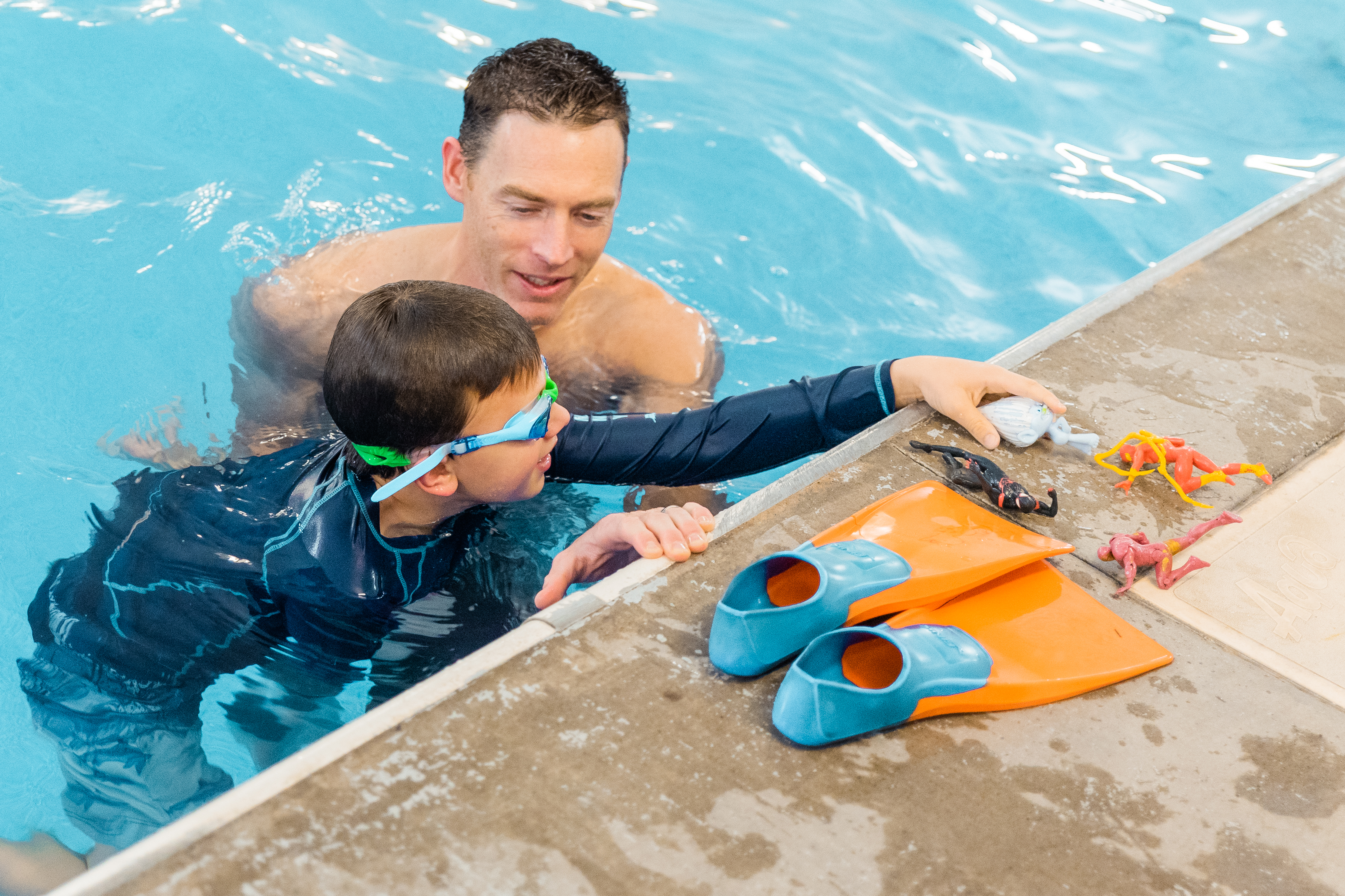
Morrison said she does not teach survival swimming lessons but teaches kids to be confident and competent in the water. The parents and tots class taught at The Swimmin’ Hole originates from the Canadian swimming lesson model and her other traditional swim lesson levels one through five are loosely based on the American Red Cross water safety program.
“I teach whole swimming. So we teach parents and tots about learning how to have fun in the pool, going under the water, jumping in. Basically, we teach them to be braver than brave and then you watch them like a hawk,” Morrison said.
Morrison said she teaches her swimmers confidence before competence. The model is beneficial for the swimmers’ learning experience but poses a challenge for the parents.
“Confidence before competence — that’s the rule. You can’t teach a kid to be competent in the water if they’re not confident. So you teach confidence first which is dangerous because then they think they can jump in anywhere,” Morrison said. “Confidence first creates a parent issue where they have to watch them more closely until we get them over that hump and to where they can actually swim to the side of the pool.”
Morrison said she wants her students to love the water and be confident they can get back to the wall if needed.
Morrison holds lessons year-round except for a short break in December and August. Registration and scheduling can be done on The Swimmin’ Hole’s website.
Provo Recreation Center’s aquatics program
Children in the Provo community also have an opportunity to learn how to swim thanks to the Provo Recreation Center’s aquatics program. Aquatics Facilities Supervisor Cathy Smits said her staff administers a variety of programs such as swim teams, club teams, high school teams, adult swim teams and swimming lessons.
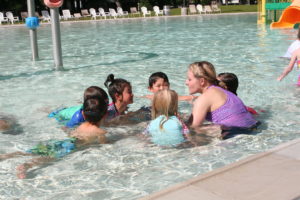
Smits said she feels educating the public on water safety is the Provo Recreation Center’s responsibility.
“Water safety is a priority for our organization,” Smits said. “We have a lot of bodies of water in our community and we feel it is vital to help all children learn the water safety skills and lifesaving skills that could help them prevent an accident and especially a drowning.”
Smits said the recreation center instructors teach a customized water safety program curated specifically for the center’s visitors.
According to Smits, the goal of recreation center swimming lessons is to provide high-quality education for participants of all ages and abilities. The swim program has lessons from six months of age and up. The programs offer a variety of lessons such as adaptive lessons, parent and tots classes and traditional level-based classes.
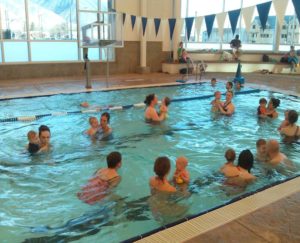
According to Smits, the center also offers private lessons to fit individual’s needs in addition to its traditional level-based lessons.
In 2018, Smits implemented a new water safety outreach program for all second graders in the Provo City School District. She said many people look at municipal pools as the water experts and feel it is important to teach water safety skills to those who don’t sign up for lessons.
“Statistics show that if kids have not learned how to swim by the second grade, they probably won’t learn to swim the rest of their life,” Smits said. “So, we have proposed through the school districts that we get every second-grader in here for a water safety outreach program where we will do a lecture-based program called WHALES Tails.”
According to Smits, the acronym WHALES in WHALES Tails stands for Water Habits Are Learned Early.
In the water safety outreach program, second-graders will learn safety concepts such as always swim with a buddy, follow the pool rules, wear your life jacket on open water and “reach or throw don’t go.” The lecture-based course of WHALES Tails concludes with a session of swimming lessons.
“It’s a free program for the second-graders. We will be giving them swimming lessons and hopefully guide them and inspire them to further swimming lessons so they can become more proficient,” Smits said.
Smits hopes this will encourage both second-graders and kids of all ages and abilities to get more involved in swimming education. She said it’s devastating to hear about drownings everywhere and especially in the Provo community, and hopes to spread the water safety outreach program to more than just second-graders in the future.
“We’re staring just as the school district level for second-grade children but ideally we would like to get out the whole community,” Smits said.
Registration for swimming lessons at the Provo Recreation Center can be done online or via phone. Lessons are offered year-round in a variety of formats.




